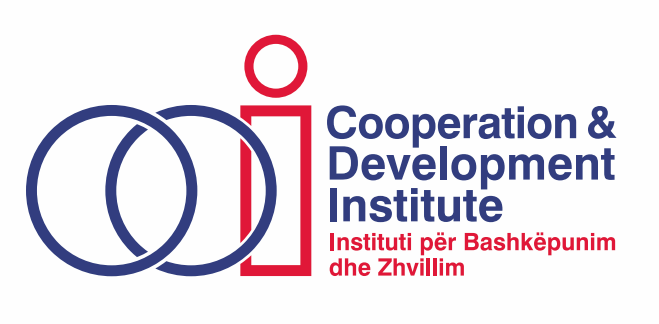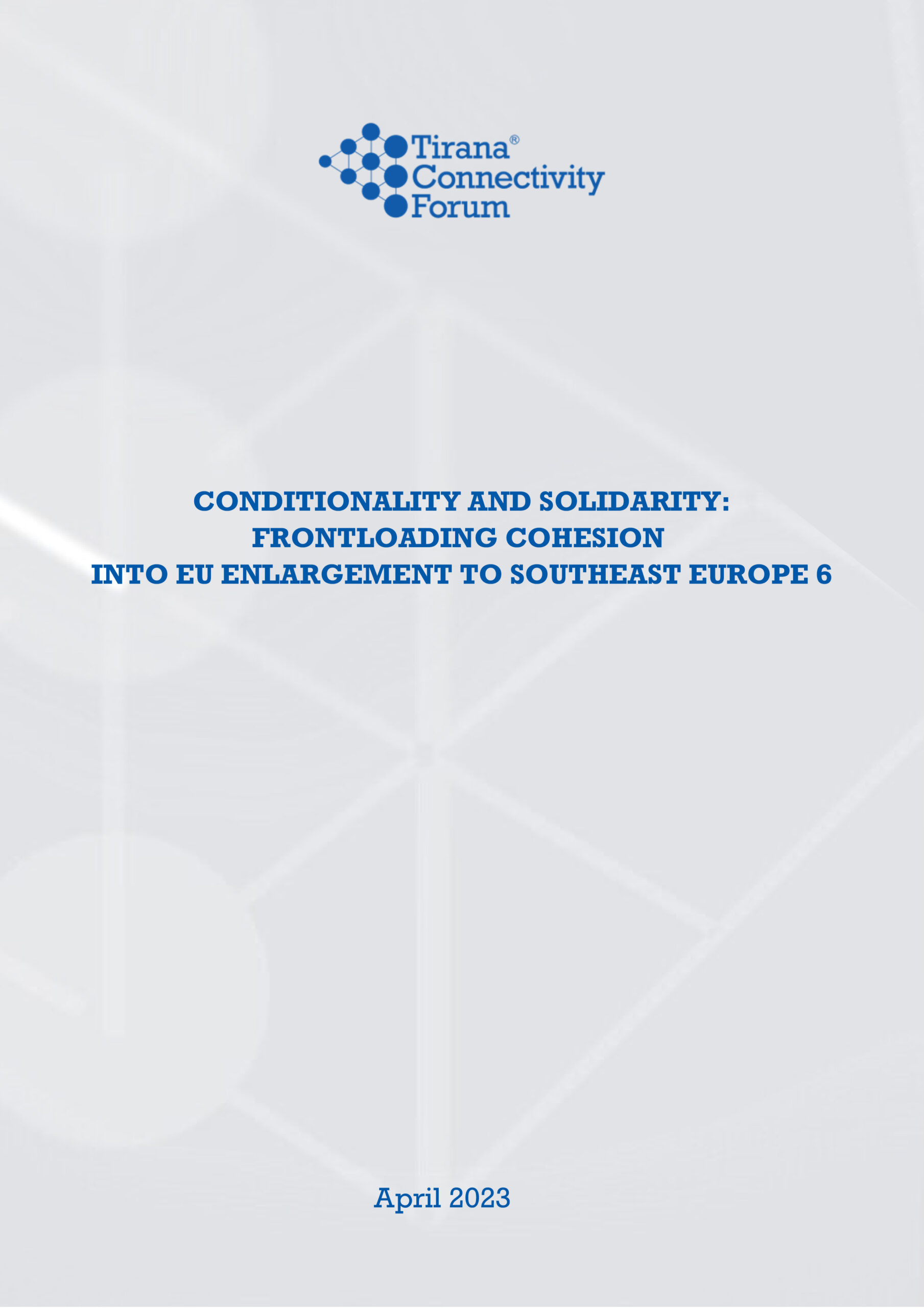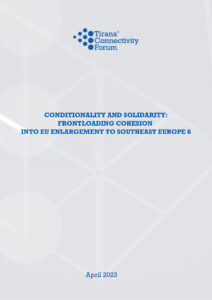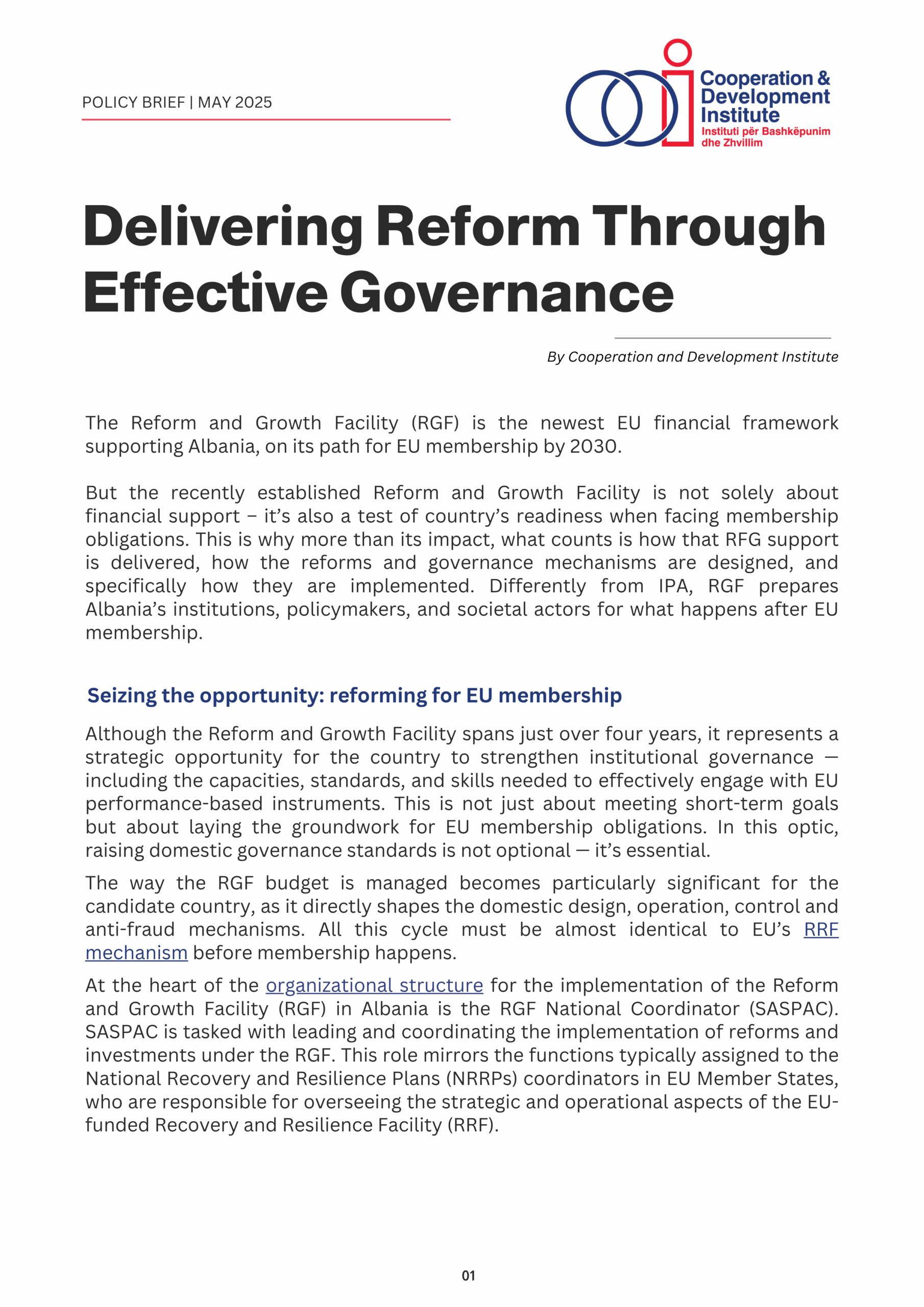CONDITIONALITY AND SOLIDARITY: FRONTLOADING COHESION INTO EU ENLARGEMENT TO SOUTHEAST EUROPE 6

INTERREG IPA EUSAIR Youth Conference | Sarajevo – May 24, 2023
May 18, 2023
TIRANA CONNECTIVITY FORUM 2023 – Reloading Enlargement
June 2, 2023Lately, many proposals to review and enhance EU Enlargement have come forward by different think tanks and other stakeholders. Earlier Access to Single Market, Staged Accession, the need to fix a target date for EU membership, etc. have been subject of a lively and thorough debate during the whole of 2022.
Our current proposal aims to bring in this debate the necessity to count with the SEE6 development needs as well as take into account the region’s convergence obligations with the EU.
We argue that the Enlargement process needs to take into account the structural differences between SEE6’s current stage of development and the EU, as well as the current extraordinary geo-political and climate-change context.
We observe that IPA amounts are not adapted to SEE6 development needs and that the differential of IPA with current EU transfers to new Member States contributes to SEE6 – EU divergence. Moreover SEE6 financial support through the Economic and Investment Plan is project-based – there are no development criteria specified in the EIP Flagship project financing procedures.
We argue that the Solidarity principle is needed to complement the Conditionality principle in the SEE6 accession towards EU. Built on Solidarity, the EU Cohesion policy is designed to help struggling European regions and its funds are distributed as per development needs and number of population.
The SEE6 access to Cohesion policy needs no EU Treaty changes. The indicative amounts to be attributed to SEE6 are insignificant for the EU budget. But more important than receiving Cohesion funds is the SEE6 access and the subsequent obligatory implementation of good governance rules to absorb them.
Being covered by the Cohesion policy makes SEE6 an integral part of the EU policy-making cycle from the design phase, further linking SEE6’s economic and social systems with the EU’s. And this is happening already. Part of EU Transport policy, the Western Balkans Corridor – Eastern Mediterranean is officially an integral part of the EU TEN-T network. Finance-wise Connecting Europe Facility (EUR 32bn) under certain conditions allows SEE6 access to EU funding for transport infrastructure and related. Moreover, supported by IPA the SEE6 are already participating in European Regional Development Fund measures (ERDF). Finally by means of agreement with the Union, the SEE6 have access to the European Social Fund Plus (ESF+).
We conclude by underlining the concrete steps need to follow up with our approach, with the aim to be ready for the preparation of the EU Multiannual Financial Framework 2028-2035.





National Parliament and the Reform Agenda 2024-2027
Read more